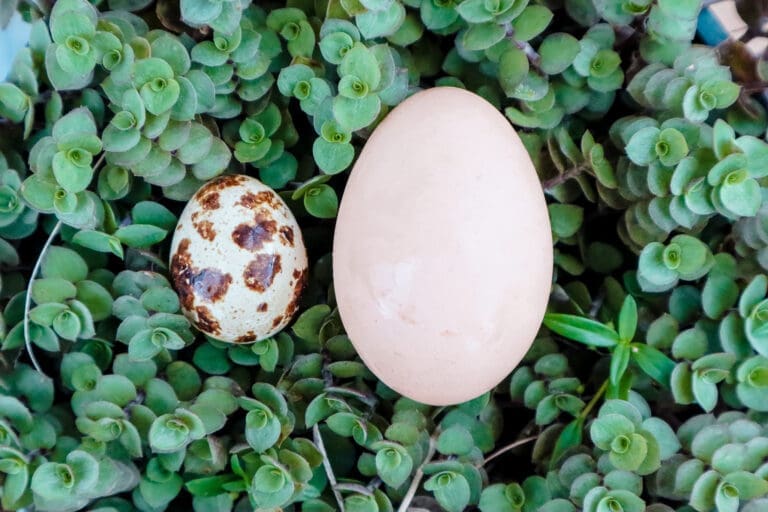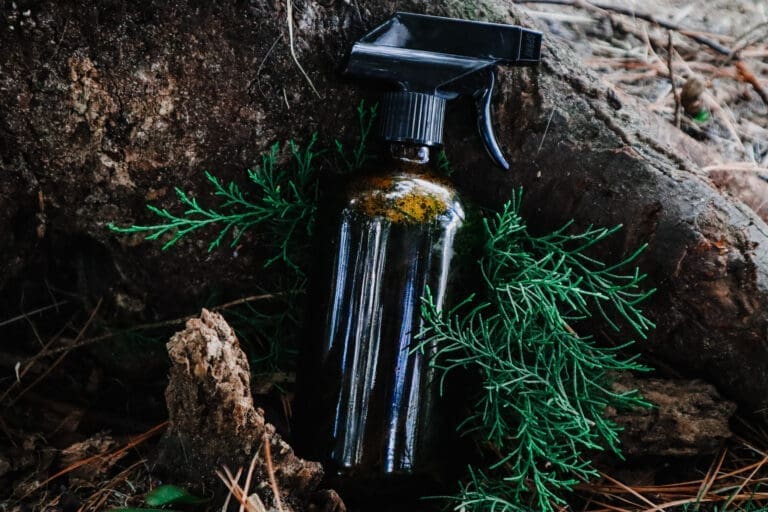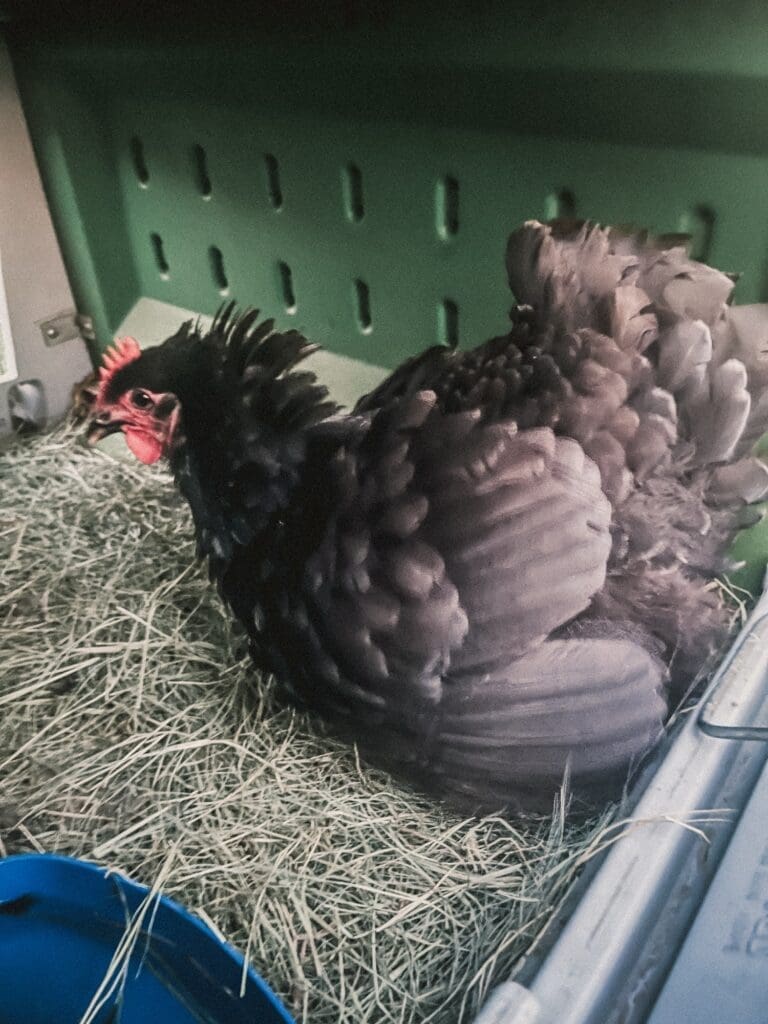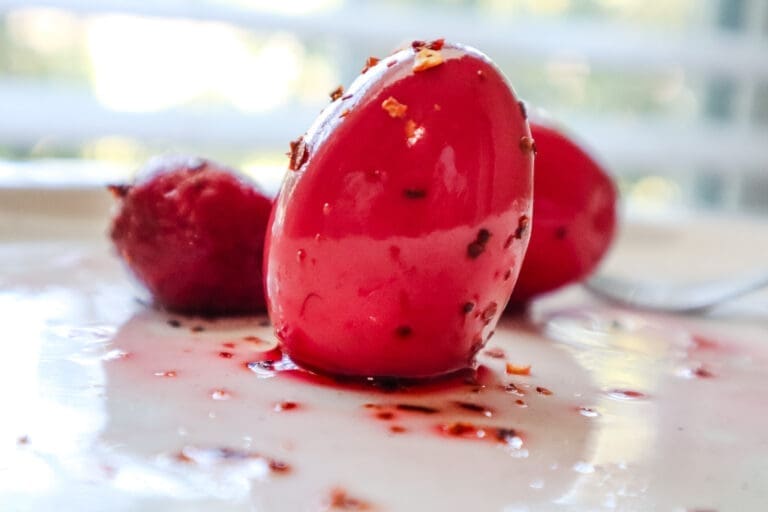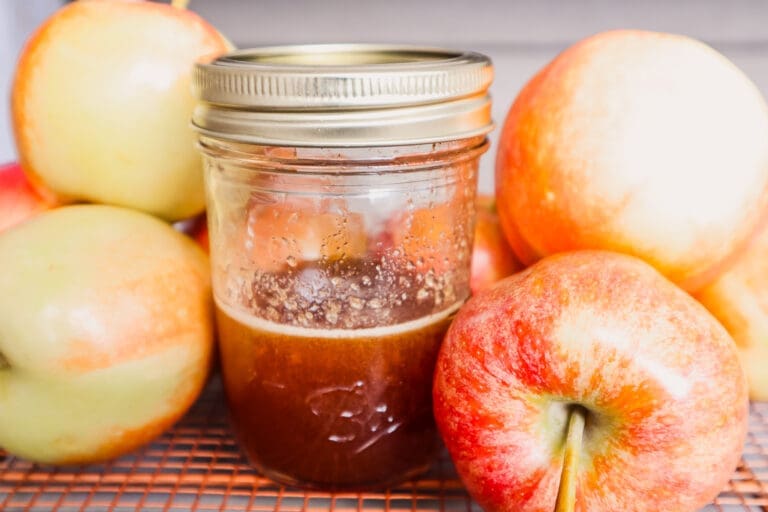Sourdough Starter
Here is a low-waste, easy-peasy, beginner way of making a sourdough starter. No weight scales or cups of flour are wasted. All you need is 2 ingredients and patience.
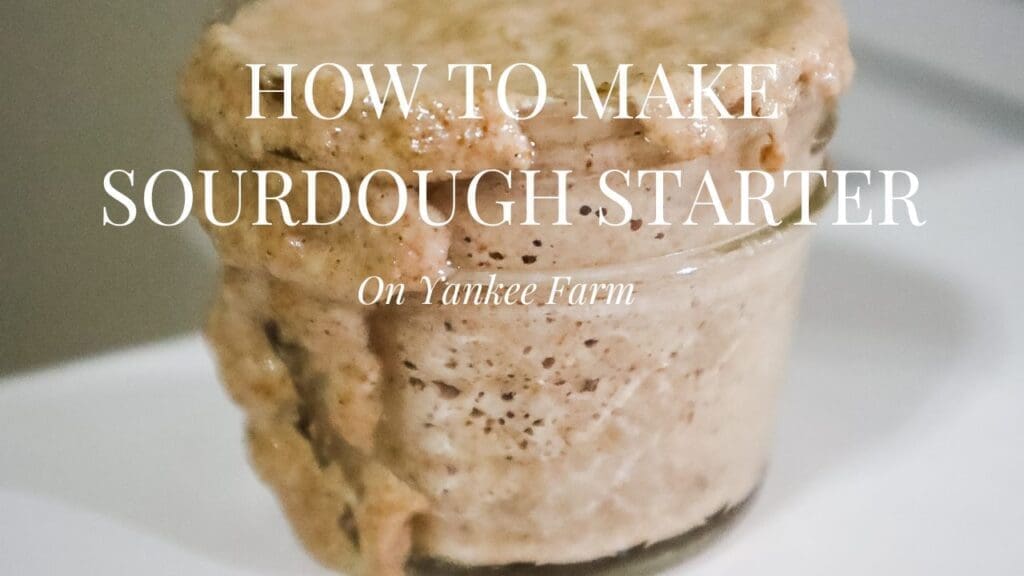
The first time I made sourdough starter, I of course followed directions from one of my favorite YouTube bloggers, Lisa from Farmhouse on Boone. I had never made a sourdough starter before. Additionally, I didn’t completely understand what exactly was supposed to happen. I saw her use big huge containers to feed her family of 10. So naturally, I went out to the store and bought the largest Ball jar container I could find! Day in and day out I put several cups of flour into my jar. Then the next day I flushed half of it down the drain. I ran through 3 bags of flour within a few weeks. It was a big huge fail!
You see, I really did not understand how sourdough worked or why I needed to discard it. I was just going through the motions, wasting time, and lots of dough ;). I promise you, after reading this article, you will fully understand the how’s and why’s of sourdough starters. In contrast to my situation, you will not go through 10 bags of flour before you bake your first artisan sourdough bread. All you need is a few minutes of maintenance per day and you will have a living, thriving, sourdough starter.
Let’s talk about sourdough!
What is a sourdough starter?
A sourdough starter is essentially just flour and water that has been fermented. Easy right?
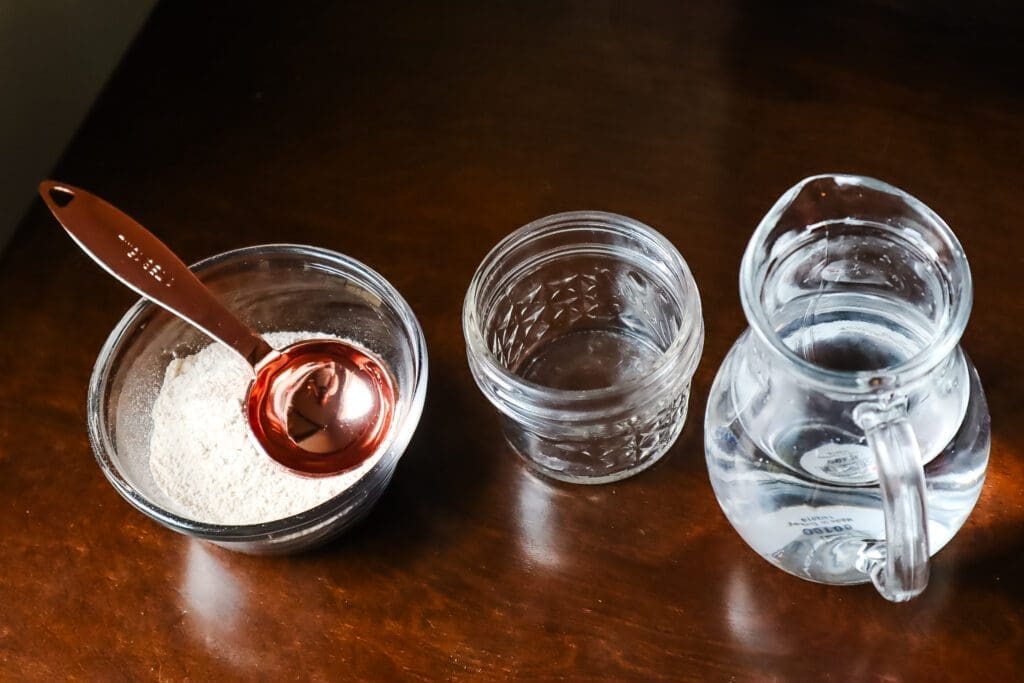
How does the sourdough fermentation process work?
To understand how the fermentation process works, you need to understand the 2 main ingredients of sourdough starter fully; Flour and water.
- Flour: Flour is not just a powder. At one time, it was a beautiful little seed or grain. This grain would one day be planted into the ground. Water would fall on it and the grain would grow into a wheat grass. Flour still has everything in it to become a plant, including enzymes, proteins, fats, and starch. It also has new friends that it picks up from the air; Wild yeasts and Bacteria.
- Water: Water is key because it is the catalyst for the fermentation process. When added to flour, it tells the ground up wheat grains “hey we are about to grow a new plant”. The proteins in the flour begin to stick together, creating a gluten protein.The enzymes work on cutting the starches in order to turn them into different types of sugar molecules. Meanwhile, the wild yeasts and bacteria become active. They are eating up all of the new sugar molecules and converting them into byproducts that lead to fermentation.

Why is the fermentation process so important for sourdough?
As you can see above, there is a lot of action going on when you mix flour and water. Now let’s really get into the main players that create the fermentation process.
- Wild Yeasts: Wild yeasts eat up the sugar molecules. Subsequently, they convert that energy into carbon dioxide and an alcohol known as ethanol. The carbon dioxide creates the bubbles and rising effect in the sourdough starter. The ethanol contributes to the flavor and smell of the starter. You may see a dark liquid on top of your starter. We call this hooch. Hooch is the alcohol byproduct of the wild yeasts.
- Bacteria: Yeasts get all the credit in the baking world but bacteria are just as important! Good bacteria know as lactobacillus bacteria ( think yogurt) attach to the flour as well. These bacteria eat up the sugar molecules just like wild yeasts. In contrast, the bacteria produce acetic acid, lactic acid, carbon dioxide, and some ethanol as well. The acetic acid and lactic acid help to create the sour and mellow flavors of the sourdough bread. They also create an environment that the bad bacteria and molds can not survive in. Thus preventing spoilage of your baked goods and starter.
The short answer is that the fermentation process helps the dough rise, prevents spoilage, and creates the cream/ sour flavor of the dough.
Why make sourdough?
Can I create true sourdough with store bought yeast?
No. Sourdough starter contains wild yeast and bacteria consisting of several different species that are caught from the environment. While, commercial store bought yeast is a single strain of yeast called Saccharomyces Cerevisiae. The commercial yeast is processed prior to packaging and behaves differently from wild yeast. It cannot break down phytic acid, spoilage is more likely, it does not create the sourdough flavor, and the bread will be more dense.
What is phytic acid in wheat flour?
Phytic acid binds nutrients together in the flour making the nutrients unavailable for digestion. Many people have an issue with eating products made with commercial yeast due to the presence of phytic acid.
Is Sourdough starter the same thing as Sourdough Discard? No… and yes. Sort of… Sourdough discard is the portion of the starter that you remove in order to maintain a healthy balance in your sourdough starter. Check out my post here on Discard to get the full picture.
Do you have to discard the sourdough starter every time you feed it?
Yes… this keeps your starter culture healthy and in balance. Once again, click here to learn more about the importance of discard.
What is the best flour to feed sourdough starter?
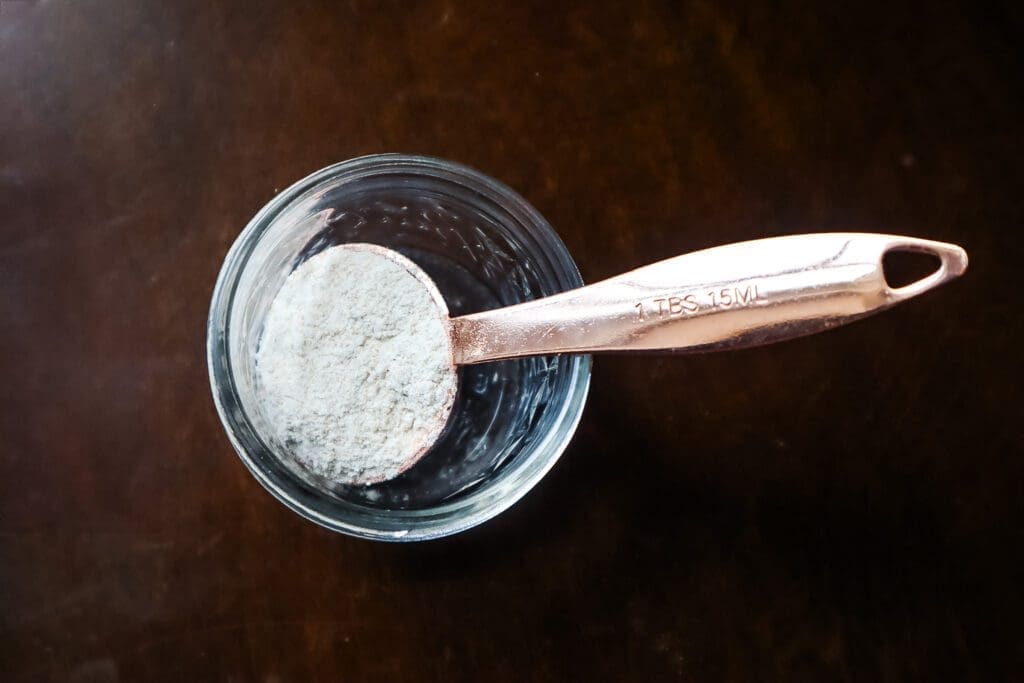
I’m going to start by saying DO NOT USE BLEACHED FLOUR FOR YOUR SOURDOUGH STARTER!
“!DO NOT USE BLEACHED FLOUR FOR YOUR SOURDOUGH STARTER!“
You can use any kind of flour that is not bleached to create a sourdough starter. With that said, whole wheat and whole rye have a higher protein content and tend to ferment quicker.
Quick video demonstrating how easy it is to make sourdough starter
Lets make some Sourdough Starter !!!
Supplies needed
1 Tablespoon
Small glass jar
Tea towel
Something small to stir with – I use chopsticks
Ingredients
Unbleached flour
Warm water
Day 1
Take 1 tablespoon of flour and pour it into your small glass jar. Then add 1 tablespoon of warm water (not hot) to your flour. You can use most water including tap. Your water may have distinct flavors or chlorine in it, so distilled water is another option. The warm water is important as it will encourage your yeast/ bacteria to activate. If the water is too hot it will kill the yeast and bacteria. Mix flour and water together. Cover the jar with a tea towel and place it in a warm, dark area.
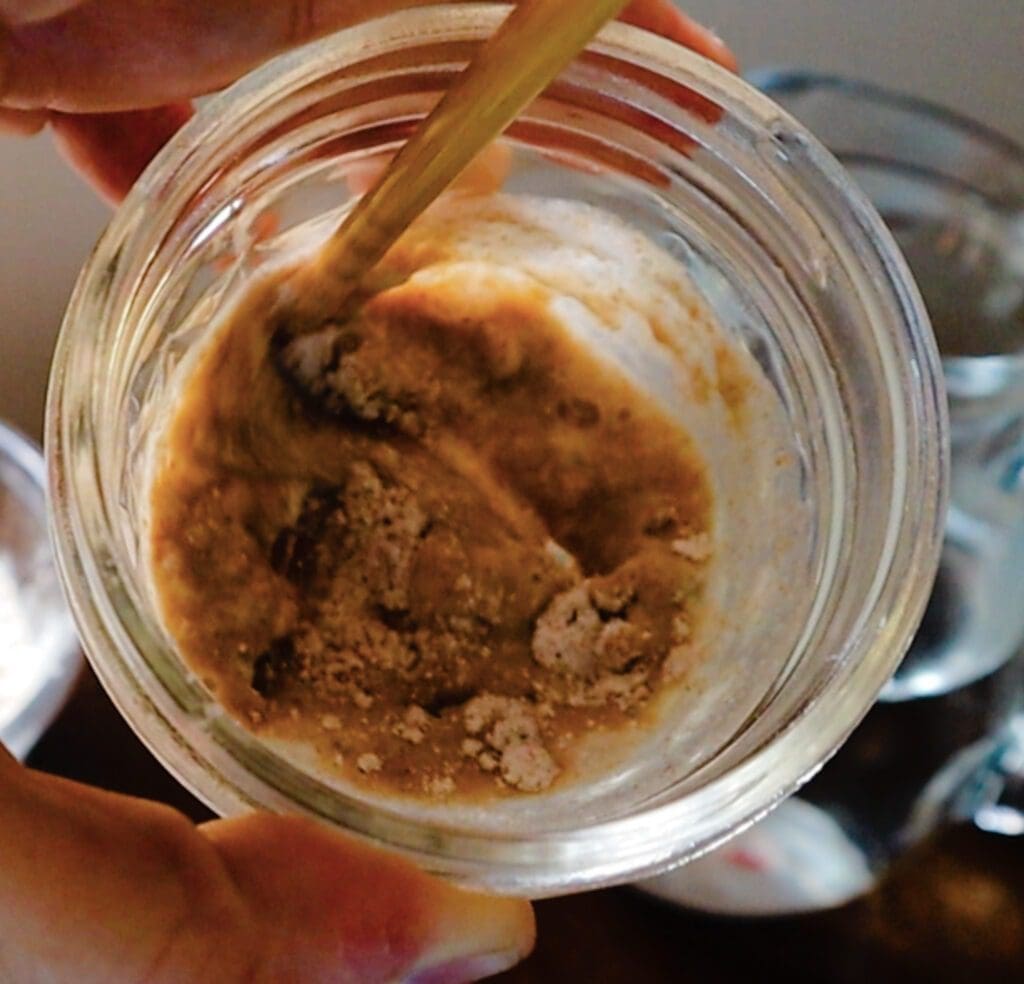
Day 2
Discard half of your mixture. If you discard more than half it is ok. It is not an exact science as some would have you believe! This will only be a small amount of discard. It is not enough to create a discard recipe. I would compost it or rinse the discard down the sink drain. I would also wait to add it to discard recipes until after a week. The colonies have not produced enough acid to prevent yucky mold and bad bacteria at this time.
After you discard half of the mixture, add 1 tablespoon of flour and 1 tablespoon of warm water. Mix it all together. Re-cover with a tea towel and place in a warm, dark place.
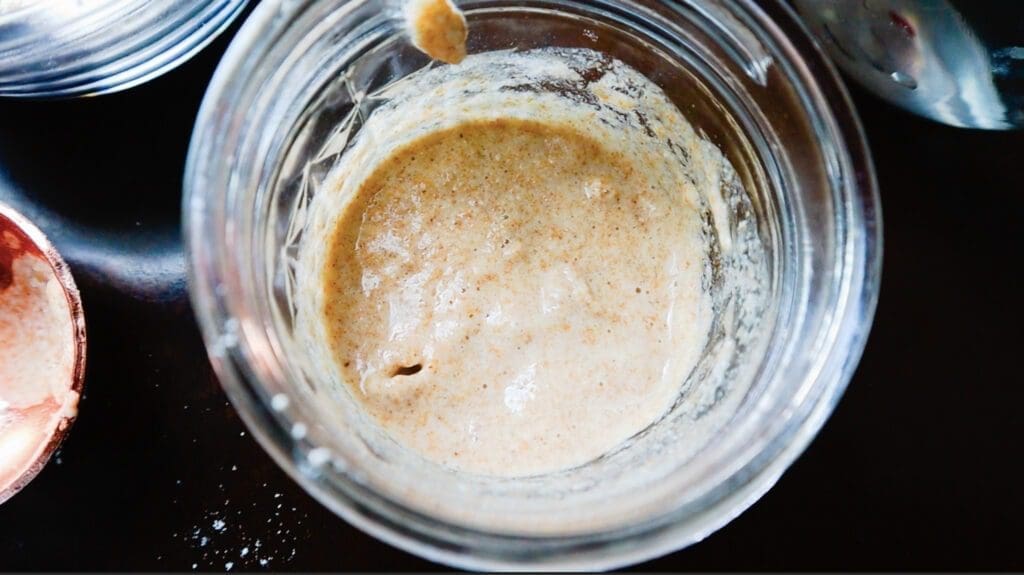
Days 3-14
Repeat the steps of day 2.
*Discard, add 1 tablespoon of flour and water, mix, re-cover with a tea towel, and store in a warm, dark spot.
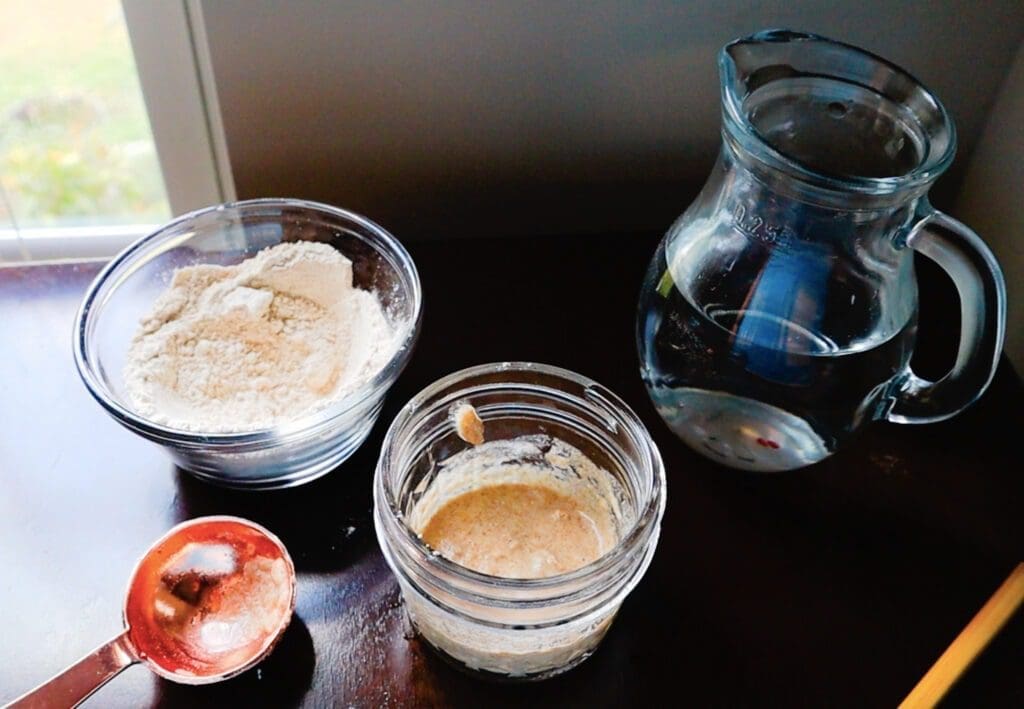
Days 15
Your starter should now be rising to twice its size within 4-12 hours. Additionally, The sourdough starter should be stable enough to place in the refrigerator if needed. The refrigerator will slow down the fermentation process enough that you will only need to re-feed it around once per week.
How do I know the Sourdough Starter is ready to bake with?
The sourdough starter will have air bubbles and double in size at its peak within 4-12 hours. In addition, you can test it by taking a small amount of starter, placing it in water, and see if it floats in the water. If it does, there are enough gases in it to help your sourdough to properly rise.

What if my recipe requires more sourdough starters?
Add the amount of flour/ water that you need for your recipe to the starter when you re-feed it. Wait 4-12 hours for the sourdough starter to double in size. Then when you make your recipe, remove the amount of starter needed for the recipe. You can place the starter back in the refrigerator until the next re-feed. Additionally, during your next re-feed, you will not have to discard any starter because this step has already been completed. The starter will last in the refrigerator for about a week before you need to re-feed it.
Can I continue to leave my new Sourdough starter on the counter?
Yes, you can leave your sourdough starter out on the counter. The only problem is that you will need to re-feed the starter daily as the yeast/ bacteria are more active at room temperature. I would only leave it out if you are trying to encourage a quicker rise or you are making sourdough recipes daily.
Can I feed my sourdough starter more than once per day?
Yes, this may even encourage the sourdough microbes to become more active and rise quickly. If you choose to do this, wait until day 7 or later.
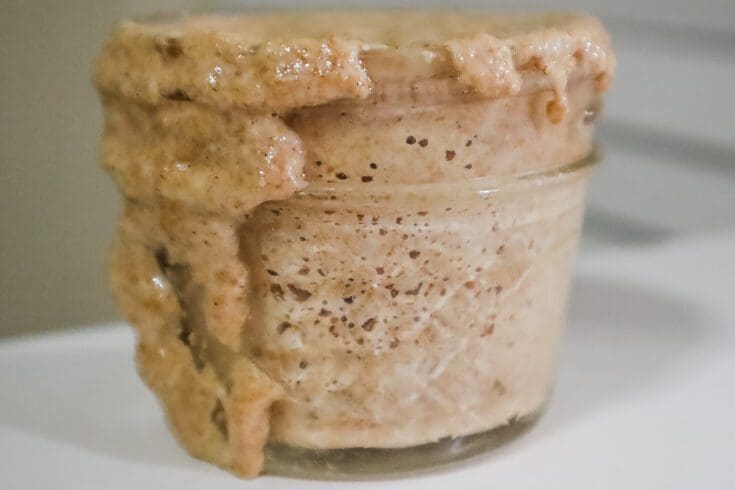
Sourdough Starter
Ingredients
- Flour- UNBLEACHED flour, Whole wheat flour works great!
- Warm Water
Instructions
- Day 1- Mix together 1 tablespoon of flour and 1 tablespoon of warm water in a glass jar. Make sure the entire mixture is wet. Cover with a tea towel. Place in a warm, dark spot for 24 hours.
- Day 2- Remove half of the starter mixture. Pour into the mixture 1 tablespoon of flour and 1 tablespoon of warm water. Mix thoroughly. Cover with tea towel and place in a warm, dark spot for 24 hours.
- Day 3-14- Repeat day 2 for the next 12 days. The starter may be ready prior to the 15th day but it may not rise as quickly.
- Day 15- Starter should be bubbly and double in size within 12 hours. You may now use thestarter in your recipes or place in the refrigerator for future use.
- Continue to feed refrigerated Sourdough Starter at least once a week. If starter is starter is left on the counter re-feed daily.
Notes
Maintaining starter:
Refigerated Starter- Re-feed starter once per week.
Room temperature starter- Re-feed starter daily

